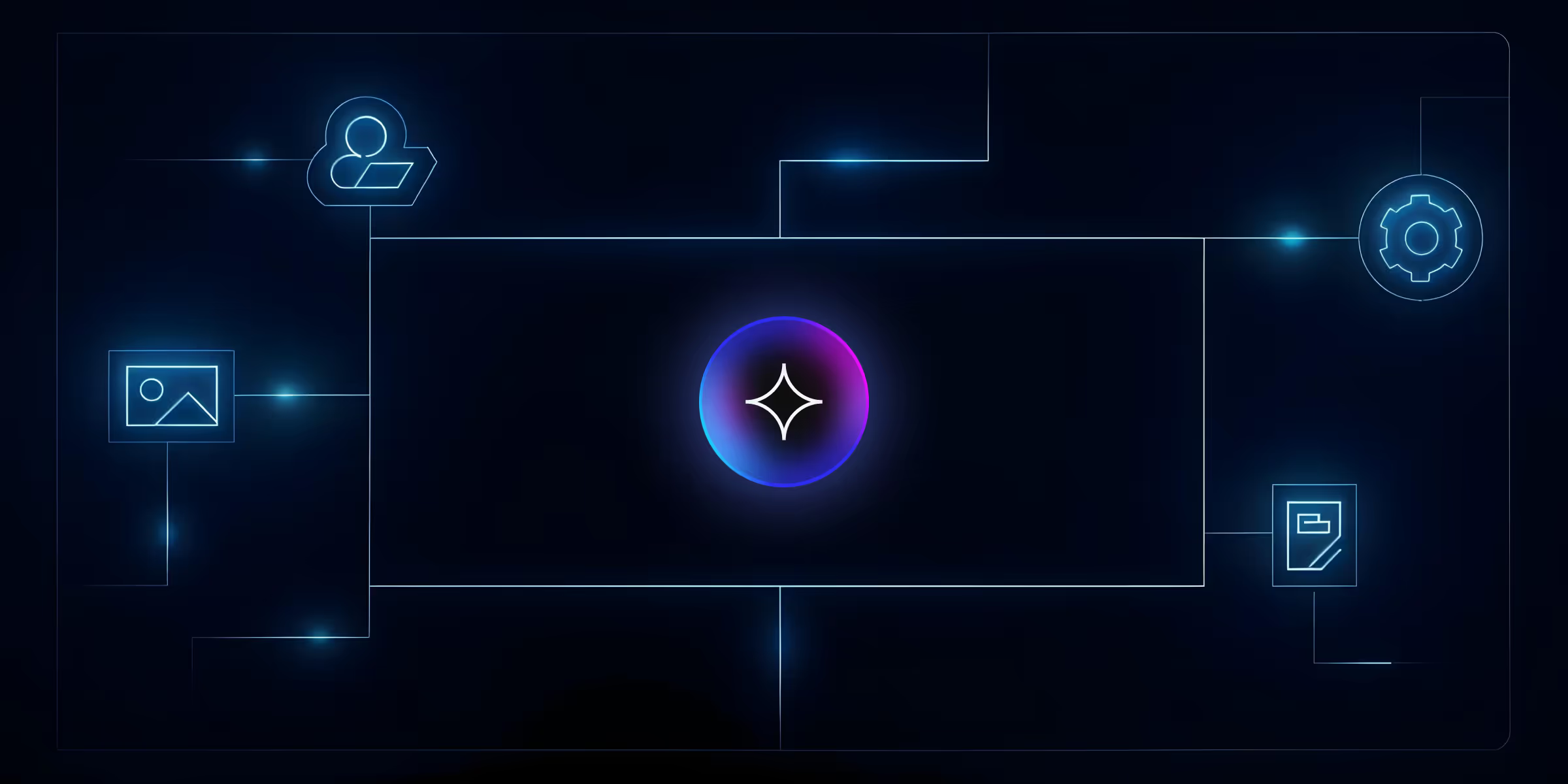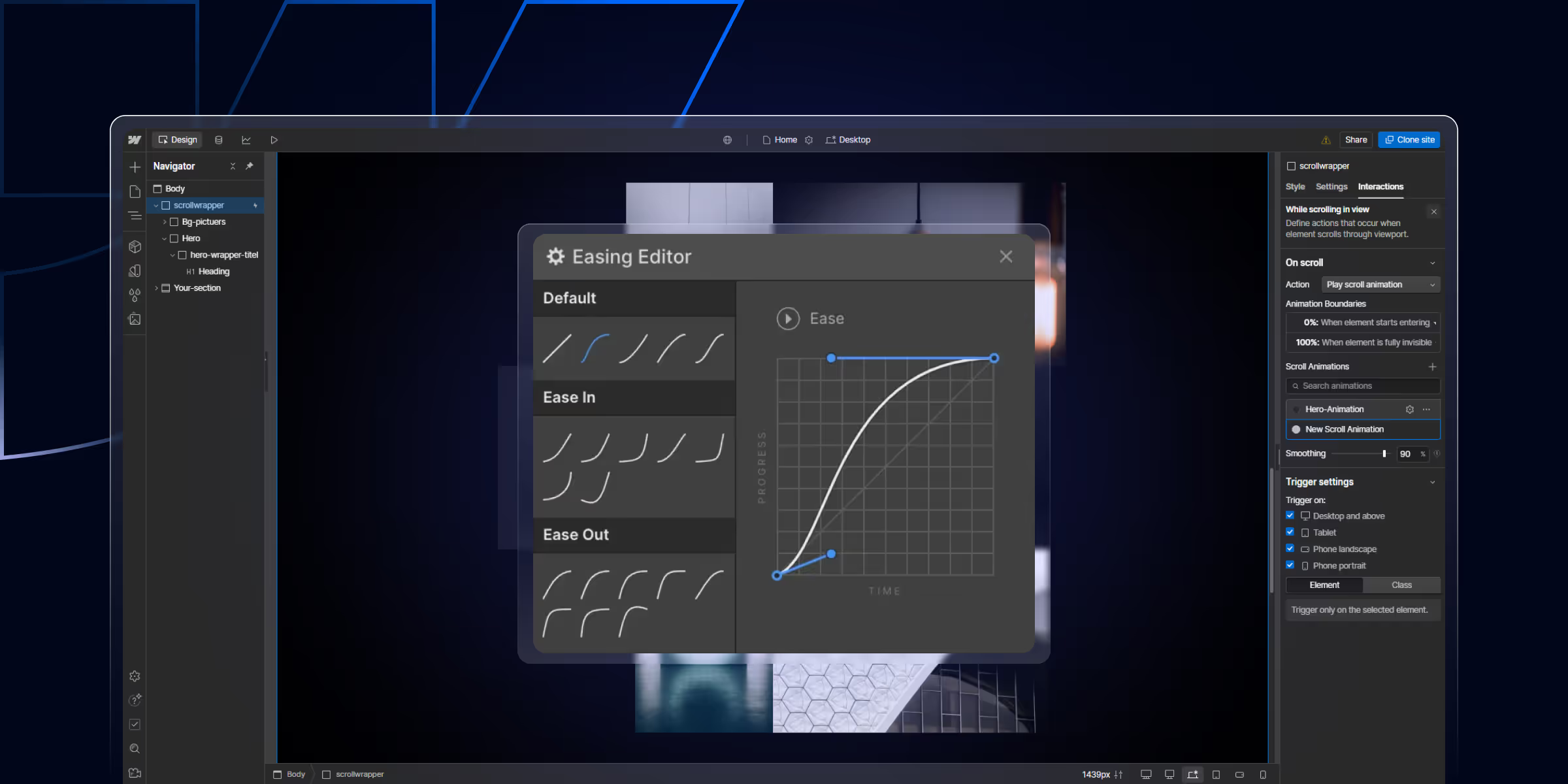Webflow CMS: Create Scalable & Dynamic Websites
Learn what is CMS Webflow and master webflow cms development. Find webflow cms features to build scalable, dynamic websites without coding.

The environment of web development is undergoing a major shift. With the rapid advancement of artificial intelligence (AI), traditional methods of building and maintaining websites are being challenged by faster, smarter, and more automated solutions. At the center of this transformation is Webflow, a no-code platform that empowers designers, developers, and businesses to build fully responsive websites without writing code.
Webflow has long been celebrated for its intuitive drag-and-drop interface and visual development environment. Now, with the infusion of AI capabilities, it's evolving into a powerful ecosystem that not only simplifies web design but also amplifies creativity, reduces development time, and drives better user experiences.
But this isn’t just a passing trend. AI in Webflow represents a fundamental change in how websites are ideated, designed, and deployed. In this blog, we explore how AI is reshaping Webflow development and the key tools and features driving this evolution.
In the past, building a website required a team of skilled developers proficient in HTML, CSS, JavaScript, and backend languages. This process was time-consuming, resource-heavy, and often inaccessible to small businesses or solo creators.
The development of no-code and low-code platforms broke this model. Tools like WordPress, Wix, and Webflow gave users visual editors to build sites without coding, drastically lowering the barrier to entry.
Unlike many no-code platforms, Webflow combines design flexibility with developer-level control. It allows users to create pixel-perfect designs that generate clean code in the background. Its built-in CMS, e-commerce capabilities, and SEO tools make it a one-stop solution for modern websites.
Webflow became a favorite among agencies, freelancers, and startups. But as AI started to mature, Webflow saw an opportunity to integrate these advancements directly into its ecosystem, resulting in a new phase of intelligent web creation.
AI first entered the design world as a support tool, suggesting templates or automating color schemes. Today, it is capable of building full wireframes, generating copy, creating SEO-optimized content, and even generating code. In Webflow, this change means creators can go from idea to launch faster and smarter than ever before.
As of 2025, Webflow has introduced several important AI features that redefine how users build and manage websites.
Webflow’s AI Site Builder enables users to generate entire website layouts based on prompts. Simply enter the type of site you need, e.g., “landing page for a SaaS product,” and the AI generates a wireframe with relevant sections like hero banners, testimonials, and pricing tables.
This drastically reduces the time spent on initial ideation and helps non-designers create beautiful layouts without relying on templates.
Webflow AI can suggest layouts based on user behavior, page type, or industry base. It also offers content generation tools that help users write headlines, subheadings, and calls-to-action optimized for conversions.
Populating content-heavy websites can be difficult. Webflow’s AI now assists in auto-generating CMS structures. For example, if you’re building a blog, the AI will suggest fields like title, summary, author, category, and publish date, and even help generate sample content to populate the site.
Thanks to integrations with tools like DALL·E and Midjourney, Webflow lets users generate or refine images using text prompts, eliminating the need for stock photo libraries. You can also auto-resize and crop images for responsiveness, all with AI support.
AI isn’t just a feature; it’s transforming the entire Webflow development lifecycle.
Instead of manually sketching layouts or using external wireframing tools, users can now prompt Webflow AI to generate wireframes instantly. This is ideal for startups, product teams, or agencies trying to rapidly prototype multiple ideas.
Webflow AI helps users optimize content in real-time for both readability and SEO.It can highlight keyword density, improve grammar, and suggest meta titles and descriptions, ensuring pages are ready to rank as you build them. As businesses look to enhance user engagement alongside SEO, many also integrate intelligent conversational tools powered by AI chatbot development services to deliver personalized interactions and automated support directly within their Webflow websites..
Creating responsive designs across multiple devices used to be a tedious task. Webflow AI now automates breakpoint adjustments and ensures ADA compliance by suggesting proper contrast ratios, alt text, and keyboard navigation setups.
AI can now automatically clone sections, align elements precisely, and suggest best-fit padding and margin settings. This speeds up the design process and ensures consistent spacing and layout throughout the site.
Beyond Webflow’s built-in AI, developers and designers can supercharge their workflows with third-party AI tools that integrate seamlessly into their Webflow projects.
These integrations extend Webflow’s capabilities far beyond design, transforming it into a smart web operations hub.
Integrating AI into Webflow unlocks a range of strategic advantages:
AI reduces the time from thinking to launching by automating repetitive and foundational tasks like layout creation, content writing, and image optimization.
Solo creators or small agencies can produce enterprise-level websites using AI support, removing the need for separate design, content, and development teams.
AI enables the creation of dynamic content and layouts based on user preferences, behavior, or segmentation. This improves retention, engagement, and brand perception.
With tools that test variations of copy, layout, and CTAs in real-time, AI helps continuously improve site performance without human intervention.
We’ll likely see AI that not only designs layouts but also adapts them independently based on user analytics. Imagine websites that self-optimize like living organisms.
AI will allow for hyper-personalization, adapting site content and UX for different audience segments automatically, in real time.
Webflow may evolve into an all-in-one intelligent web studio, incorporating more advanced LLMs, visual generation tools, and predictive design patterns.
Despite all these advancements, AI won’t replace human designers or developers. It will act as a creative partner, handling the heavy lifting while you focus on strategy, storytelling, and emotional resonance.
AI is not just an enhancement to Webflow; it’s redefining what’s possible in the world of web design and development. From smart layout generation to SEO optimization, image generation, and workflow automation, AI is streamlining the development process and empowering creators like never before.
As we look toward a future shaped by generative design, intelligent UX, and real-time personalization, the marriage between AI and Webflow offers an unprecedented opportunity to build faster, smarter, and more engaging websites.
AI enhances Webflow development by automating tasks like layout generation, content writing, image optimization, and code suggestions, improving efficiency and design accuracy.
Yes, AI tools can assist with keyword optimization, meta tag generation, alt text for images, and real-time content analysis to boost SEO in Webflow websites.
No, AI supports developers by streamlining repetitive tasks and providing smart suggestions. However, creative direction, branding, and strategic design still require human expertise.
AI speeds up development, reduces errors, enhances UX through predictive design elements, and helps personalize websites for better user engagement and conversion.
Yes, tools like ChatGPT, Jasper, Midjourney, and Figma AI plugins can integrate into the workflow alongside Webflow to generate content, assist with design, and automate development steps.

Learn what is CMS Webflow and master webflow cms development. Find webflow cms features to build scalable, dynamic websites without coding.

Learn SEO for B2B SaaS companies. This guide covers strategies, tips, and tactics to boost organic traffic and cut costs.

Learn how to create Webflow interactions and animations without coding. Master scroll effects, hover animations, and click triggers to build engaging, high-converting websites.
Quick Turnaround. No Contracts. Cancel Anytime. Book a 30 minutes consulting call with our expert.